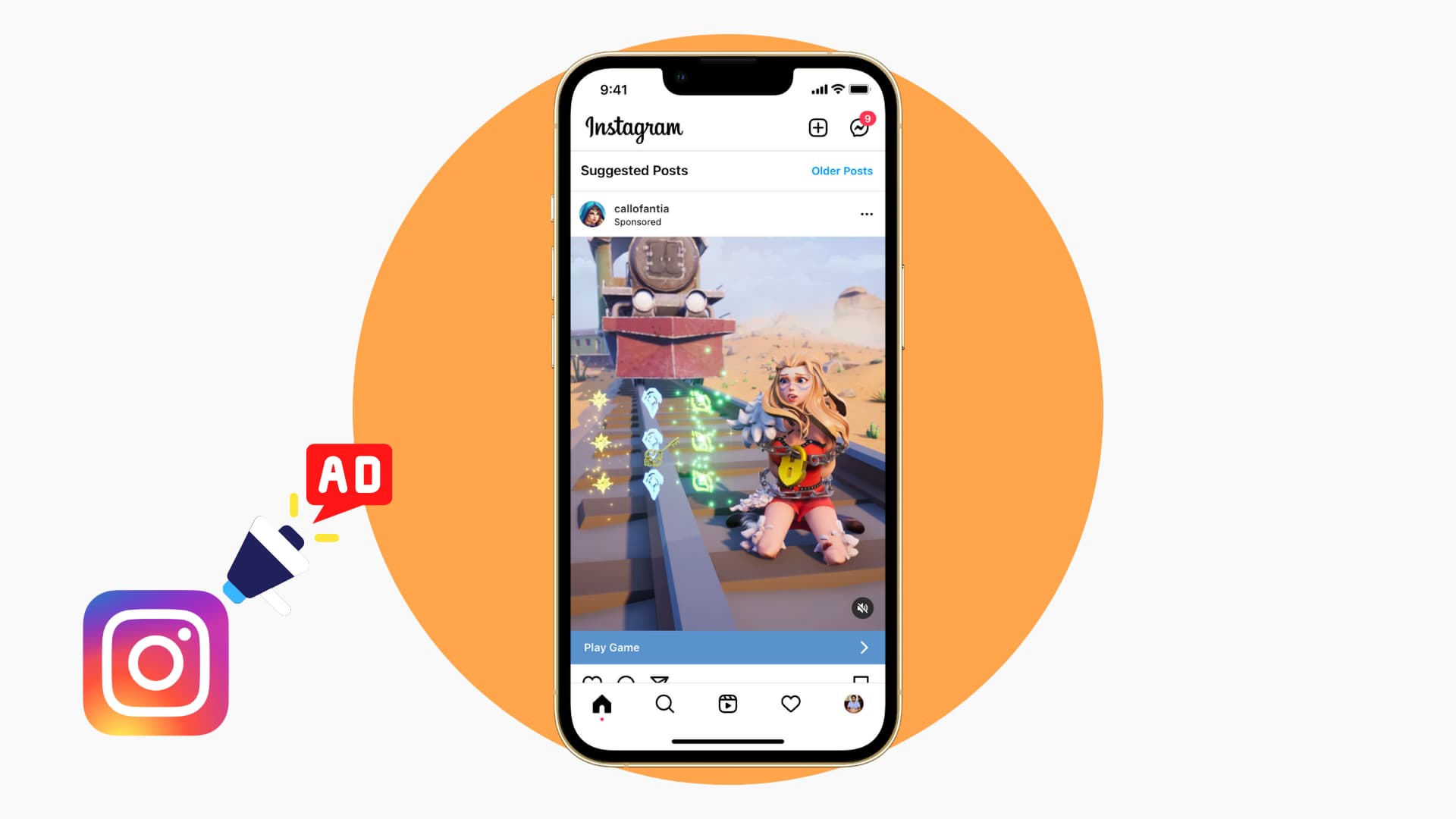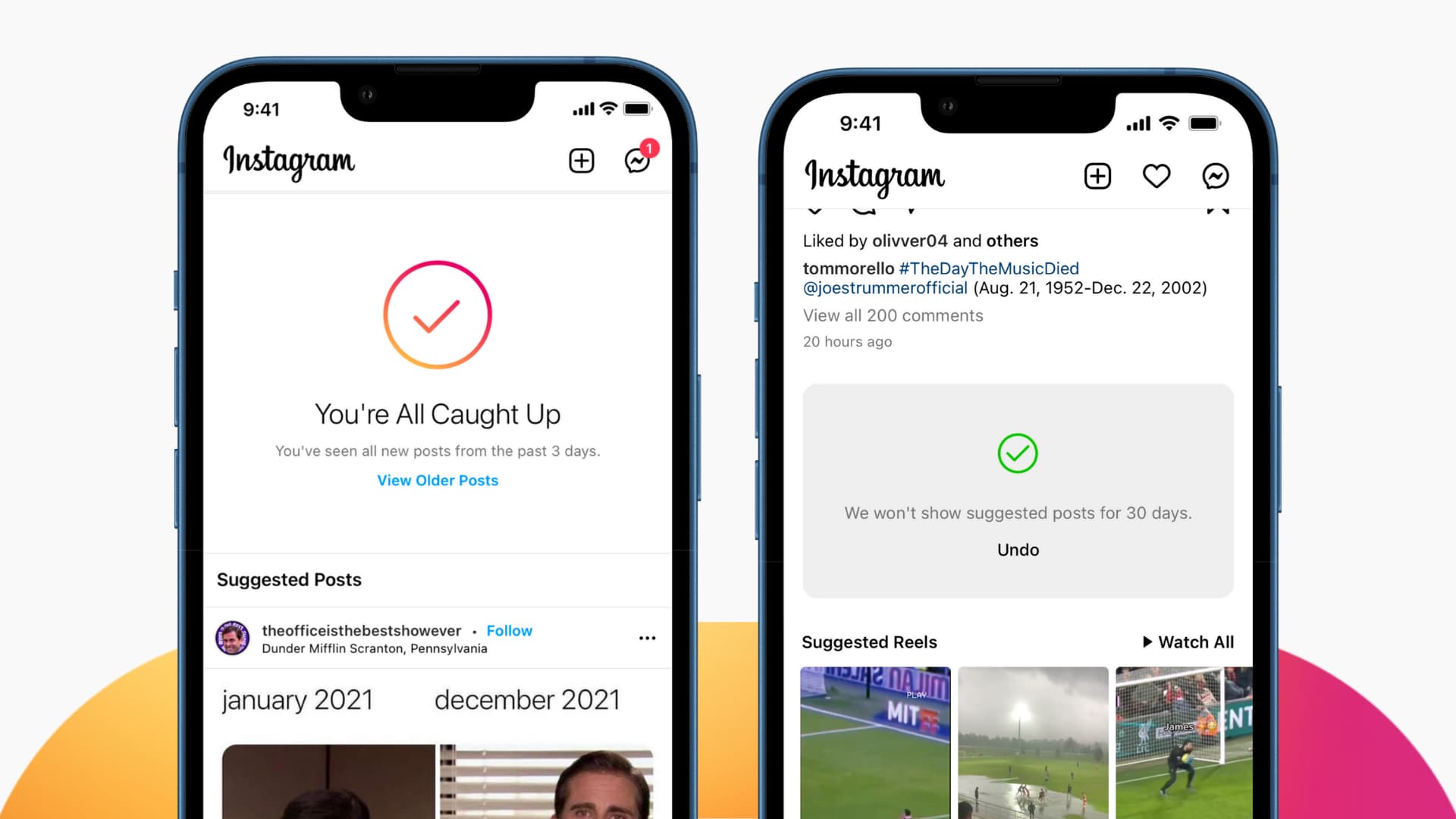Why are There Ads on Instagram
Instagram, being one of the most popular social media platforms with over a billion active users, has become an ideal space for businesses to reach their target audience. As a result, Instagram introduced ads to monetize its platform and provide businesses with a way to promote their products and services.
The primary reason for the presence of ads on Instagram is to generate revenue. Like any other company, Instagram needs to sustain its operations and continue providing a free platform for users. The revenue generated from these ads helps cover the costs of managing and improving the app, as well as supporting ongoing development and innovation.
Moreover, ads on Instagram allow businesses to engage with their audience more effectively. With advanced targeting options, businesses can display ads to specific demographics, locations, and interests. This level of precision helps them reach the right people who are more likely to be interested in their offerings.
For users, ads on Instagram can sometimes be seen as intrusive or interruptive. However, it’s important to remember that these ads help keep the platform free for users to enjoy. Without ads, Instagram might need to charge a subscription fee or limit access to certain features, which could alienate a significant portion of its user base.
Instagram strives to create a balance between user experience and ad delivery. They have strict guidelines and policies in place to ensure that ads are relevant, high-quality, and non-disruptive. The platform continually monitors and regulates the content of ads to maintain a positive user experience.
Additionally, ads on Instagram provide an opportunity for users to discover new products, brands, and services. They serve as a platform for businesses to showcase their offerings and connect with potential customers. While ads can sometimes feel intrusive, they also bring value by presenting users with relevant and personalized recommendations based on their interests and preferences.
In summary, ads on Instagram are a necessary part of the platform’s revenue model, enabling it to provide a free and accessible service to users. While they may sometimes disrupt the user experience, Instagram strives to ensure that ads are of high quality, relevant, and engaging. By understanding the purpose behind ads on Instagram, users can better appreciate their presence and make the most out of their experience on the platform.
How do Instagram Ads Work
Instagram ads work by utilizing the platform’s advanced targeting capabilities to deliver sponsored content to the most relevant and interested users. Here’s a breakdown of how the process works:
1. Ad Creation: Businesses and advertisers create their ad campaigns using the Facebook Ads Manager or the Instagram app. They can choose from various ad formats, including photo ads, video ads, carousel ads, and stories ads.
2. Ad Targeting: Advertisers can define their target audience based on demographics, interests, behaviors, and location. This targeting helps ensure that the ads reach the users who are most likely to engage with the content and take the desired action.
3. Ad Auction: When an ad is created, it enters an auction system where advertisers bid for ad placements. The bid amount, relevance score, and estimated action rates all play a role in determining the winning bid. The highest bidder with a relevant and engaging ad gets their content displayed to the targeted audience.
4. Ad Placement: Instagram offers various placements for ads, including the user’s feed, stories, explore page, and the recently introduced Reels. The ads seamlessly blend into the user experience, appearing as native content.
5. Ad Performance Monitoring: Advertisers can track the performance of their ads through analytics provided by Instagram. Metrics such as impressions, reach, clicks, conversions, and engagement rates allow advertisers to assess the effectiveness of their campaigns and make necessary optimizations.
Instagram also prioritizes user feedback to improve the ad experience. Users can provide feedback on ads they find irrelevant, offensive, or misleading. This feedback helps Instagram take appropriate actions and ensure a high-quality ad ecosystem.
It’s important to note that the content of Instagram ads is regulated to ensure it aligns with the platform’s policies and community guidelines. Instagram reviews ads to prevent the promotion of illegal or harmful content, misleading claims, or offensive material.
In summary, Instagram ads work by allowing advertisers to create targeted campaigns, bid for ad placements, and deliver content to a specific audience. The platform provides powerful analytics for advertisers to measure the performance of their ads and make improvements. By continuously monitoring ad quality and user feedback, Instagram aims to maintain an engaging and relevant ad experience for its users.
Tips to Reduce Ads on Instagram
While ads play a significant role in monetizing Instagram, if you’re looking to reduce the number of ads you see on your feed, here are some helpful tips:
1. Engage with Relevant Content: Instagram’s algorithm takes into account the content you engage with the most. By actively liking, commenting, and saving posts that resonate with you, the algorithm learns your preferences and shows you more of the content you enjoy, potentially reducing the number of ads in your feed.
2. Follow Accounts You’re Interested In: By following accounts that align with your interests, hobbies, and values, you’re more likely to see organic content that you find engaging. This can help minimize the appearance of ads, as the algorithm may prioritize showing you posts from accounts you actively follow.
3. Explore and Discover: Utilize the Explore page on Instagram to discover new accounts, trends, and content. By actively exploring and engaging with this curated content, you may come across posts that interest you organically rather than through sponsored ads.
4. Hide or Report Irrelevant Ads: When you come across an ad that is not relevant to your interests or preferences, you have the option to hide or report it. Instagram takes user feedback seriously and uses it to refine the ads shown to individuals. By reporting irrelevant ads, you can contribute to improving your ad experience on the platform.
5. Optimize Ad Preferences: Instagram provides users with the option to manage their ad preferences. You can do this by going to your account settings, selecting “Ads,” and adjusting the settings to reflect your interests accurately. This can help tailor the ads you see on Instagram to be more relevant and aligned with your preferences.
6. Be Mindful of Sponsored Content: Sponsored content, including influencer partnerships, can sometimes appear similar to regular posts. While they may not be strictly classified as ads, they are still promotional content. Being aware of this distinction can help you identify and differentiate between organic posts and sponsored content on Instagram.
7. Use Ad-Blocking Apps or Extensions: If you’re finding ads on Instagram to be particularly intrusive, you may consider utilizing ad-blocking apps or browser extensions. These tools can help minimize the display of ads across various websites and platforms, including Instagram.
By implementing these tips, you can potentially reduce the number of ads you see on your Instagram feed and have a more tailored and enjoyable experience on the platform.
Changing Ad Preferences on Instagram
Instagram offers users the ability to customize their ad preferences to ensure that the ads they see align more closely with their interests. Here’s how you can change your ad preferences on Instagram:
1. Open Instagram Settings: Tap on your profile icon in the bottom right corner of the screen to access your Instagram profile. Then, tap on the three horizontal lines in the top right corner to open the menu. From the menu, select “Settings.”
2. Access Ad Preferences: In the “Settings” menu, scroll down and select “Ads.” This will take you to the “Ad Preferences” section, where you can manage the ads shown to you on Instagram.
3. Manage Ad Interests: Under the “Ad Preferences” section, you’ll find an option to “Ad Interests.” This is where Instagram collects data about your interests based on your activity on the platform. You can review and remove specific interests that you do not want to be used for ad targeting.
4. Hide Ad Topics: Instagram allows you to hide specific ad topics that you may find irrelevant or sensitive. Under the “Ad Preferences” section, select “Hide Ad Topics.” Here, you can browse through various ad topics and hide the ones that are not of interest to you.
5. Adjust Ad Settings: In the “Ad Preferences” section, you also have the option to control the types of ads you see. You can select “Ad Settings” to customize your ad experience further. You can choose whether you want to see ads based on your activity on Instagram, ads from specific advertisers, and partner categories.
6. Reset Ad Interests: If you want to start fresh and have Instagram forget your previous ad interests, you can choose the “Reset Ad Interests” option. This will remove all the interests associated with your profile, allowing you to build a new set of ad preferences based on your future activity.
It’s important to note that changing your ad preferences on Instagram doesn’t completely remove ads from your feed. However, it helps ensure that the ads you see are more relevant and aligned with your preferences. Instagram uses this information to deliver a more personalized ad experience tailored to your interests.
By actively managing your ad preferences on Instagram, you have more control over the types of ads you encounter on the platform, creating a more personalized and enjoyable experience.
Disabling Ad Personalization on Instagram
If you prefer not to have ads personalized based on your activity and interests, Instagram provides an option to disable ad personalization. Here’s how you can do it:
1. Open Instagram Settings: Tap on your profile icon in the bottom right corner of the screen to access your Instagram profile. Then, tap on the three horizontal lines in the top right corner to open the menu. From the menu, select “Settings.”
2. Access Ad Preferences: In the “Settings” menu, scroll down and select “Ads.” This will take you to the “Ad Preferences” section.
3. Disable Ad Personalization: Under the “Ad Preferences” section, you’ll find an option called “Ad Personalization.” Toggle the switch to disable ad personalization. By doing this, Instagram won’t use your app and website activity to create personalized ads for you.
4. Confirmation: Once you disable ad personalization, Instagram may present a confirmation message to inform you about the impact of this action. Read the message to understand the implications of disabling ad personalization, and if you’re certain, proceed with disabling it.
It’s important to note that disabling ad personalization doesn’t completely remove ads from your Instagram feed. However, it prevents Instagram from tailoring ads specifically based on your activity and preferences. Instead, you may see more generic ads that are not personalized to your interests.
Keep in mind that disabling ad personalization may not entirely eliminate all personalized elements on Instagram. Other factors, such as your location or the accounts you follow, may still influence the ads you see to some extent.
If you change your mind in the future and wish to re-enable ad personalization, you can follow the same steps mentioned above, but toggle the switch back to enable personalization.
By disabling ad personalization on Instagram, you can have a more generic ad experience, free from tailored recommendations based on your activity and interests.
Reporting Inappropriate Ads on Instagram
Instagram strives to maintain a safe and enjoyable experience for its users, which includes ensuring that the ads displayed on the platform adhere to community guidelines and policies. If you come across an ad that you find inappropriate, offensive, or misleading, you can report it to Instagram. Here’s how you can report inappropriate ads:
1. Identify the Ad: When you encounter an ad that you believe violates Instagram’s advertising policies, take note of the content, account name, and any specific details that you find concerning. This information will be helpful when reporting the ad.
2. Report the Ad: Tap or click on the three dots (…) at the top right corner of the ad. From the dropdown menu, select “Report Ad.”
3. Choose the Reason: Instagram will present you with different options to specify the reason for reporting the ad. Select the most relevant reason that matches the issue you have with the ad. These reasons may include offensive content, misleading claims, or other violations.
4. Provide Additional Information (optional): Instagram may give you the option to provide additional details or context about why you find the ad inappropriate. This step is optional but can be helpful in providing more information to Instagram regarding the violation.
5. Submit the Report: Once you’ve filled out the relevant information, review your report to ensure its accuracy and then submit it. Instagram will review the reported ad and take appropriate action if it is found to be in violation of their policies.
Reporting inappropriate ads helps Instagram maintain a high-quality ad ecosystem, and your feedback is valuable in holding advertisers accountable for their content. It also contributes to creating a safer and more enjoyable experience for all users.
It’s important to note that while Instagram aims to review reported ads promptly, they may not be able to respond individually to each report. However, rest assured that Instagram takes user reports seriously and takes appropriate action to enforce its advertising policies.
By reporting inappropriate ads, you can contribute to making Instagram a more positive and respectful platform for all users.
Do Not Disturb: Turning off Sensitive Content on Instagram
If you prefer to have more control over the type of content you see on Instagram, particularly sensitive or explicit material, you have the option to enable the “Sensitive Content Control” feature. This feature allows you to customize your experience and filter out sensitive content that may not align with your preferences. Here’s how you can turn off sensitive content on Instagram:
1. Open Instagram Settings: Tap on your profile icon in the bottom right corner of the screen to access your Instagram profile. Then, tap on the three horizontal lines in the top right corner to open the menu. From the menu, select “Settings.”
2. Access Account Settings: In the “Settings” menu, scroll down and select “Account.” This will take you to the “Account Settings” section.
3. Manage Sensitive Content Control: Under the “Account Settings” section, look for the option called “Sensitive Content Control.” Tap on it to customize the settings related to sensitive content.
4. Toggle Off Sensitive Content: Once in the “Sensitive Content Control” settings, you will see a toggle switch. If you want to turn off sensitive content, toggle the switch to the “off” position. This will hide sensitive or explicit content from appearing in your feed and Explore page.
5. Confirmation: Instagram may present a confirmation message to ensure you understand the impact of turning off sensitive content. Read the message to understand the implications, and if you’re certain, proceed with disabling it.
By turning off sensitive content, you can create a more tailored Instagram experience that aligns with your preferences and comfort level. This feature is particularly helpful for users who prefer to avoid explicit or sensitive material.
It’s important to note that while Instagram filters sensitive content based on algorithms and user reports, the accuracy of these filters may not always be perfect. Therefore, it’s a good idea to periodically review and adjust your settings to ensure the content you see aligns with your preferences.
If you ever change your mind and want to re-enable sensitive content, you can follow the same steps mentioned above and toggle the switch to the “on” position.
By utilizing the sensitive content control feature, you have more control over the type of content that appears on your Instagram feed, allowing you to tailor your experience to your comfort and preferences.
Using Third-Party Apps to Block Ads on Instagram
If you’re looking to have a completely ad-free experience on Instagram, you may consider using third-party apps that specialize in ad blocking. These apps can help you eliminate or significantly reduce the number of ads that appear on your Instagram feed. Here’s how you can use third-party apps to block ads on Instagram:
1. Research Reliable Ad-Blocking Apps: Look for reputable ad-blocking apps that are compatible with your device’s operating system. Popular options include AdGuard, Adblock Plus, and uBlock Origin. Read reviews, check ratings, and ensure the app is safe to use before downloading.
2. Download and Install: Once you have selected an ad-blocking app, download and install it on your device. Follow the instructions provided by the app to complete the installation process.
3. Configuration: Open the ad-blocking app and navigate to its settings or preferences. Look for options related to blocking ads on Instagram or social media platforms. Customize the settings according to your preferences, such as blocking specific ad formats or targeting techniques.
4. Enable App and Notifications: Ensure that the ad-blocking app is enabled and running in the background on your device. Some apps may require you to enable notifications or specific permissions to effectively block ads on Instagram.
5. Open Instagram and Experience Ad-Free Browsing: Launch the Instagram app on your device and navigate through your feed. You should notice a significant reduction in the number of ads or even an ad-free experience, depending on the effectiveness of the ad-blocking app you’ve chosen.
It’s important to note that while third-party ad-blocking apps can be effective in reducing ads on Instagram, they may not block every single ad or sponsored post. Instagram’s algorithms and ad delivery methods may evolve over time, resulting in some ads still being displayed. Additionally, be cautious when using third-party apps and ensure they come from trusted sources to protect your device and personal information.
Keep in mind that ad-blocking apps may interfere with the revenue model that supports Instagram and other social media platforms. Ads often play a vital role in providing free access to these platforms and supporting their ongoing development. If you enjoy using Instagram, consider supporting the platform by allowing non-intrusive, relevant ads to be shown.
By using reputable third-party ad-blocking apps, you can significantly reduce the number of ads on Instagram and have a more streamlined browsing experience. Just remember to stay informed about the app’s features, updates, and potential impact on the platform’s sustainability.
Frequently Asked Questions about Ads on Instagram
As ads have become a prominent feature on Instagram, users often have questions about how they work and how to manage them. Here are some frequently asked questions about ads on Instagram:
1. Why am I seeing ads on Instagram?
Instagram displays ads to generate revenue and keep the platform free for users. The ads you see are based on factors like your activity, interests, and demographics.
2. Are the ads on Instagram personalized?
Yes, Instagram uses your activity and information to personalize the ads you see. This is done through data analysis and tracking your interactions on the platform.
3. Can I control the types of ads I see on Instagram?
Yes, you can control your ad preferences on Instagram. By managing your settings, you can influence the types of ads shown to you and even hide specific ad topics.
4. How do advertisers target specific users on Instagram?
Advertisers can target users on Instagram based on demographics, interests, behaviors, and location. They can create customized ad campaigns to reach specific segments of the audience.
5. How do I report an ad that I find inappropriate?
If you come across an ad that violates Instagram’s policies, you can report it. Tap on the three dots (…) in the top right corner of the ad and select “Report Ad.” Choose the appropriate reason and submit your report.
6. Can I disable ad personalization on Instagram?
Yes, you have the option to disable ad personalization on Instagram. By turning off ad personalization in your settings, you can limit the platform’s use of your activity for targeted ads.
7. How do ads on Instagram benefit businesses?
Ads on Instagram provide businesses with a powerful tool to reach their target audience and promote their products or services. They help increase brand visibility, drive traffic, and generate sales or leads.
8. Do Instagram ads affect organic reach?
Instagram ads do not directly impact organic reach. However, ads may compete for attention within users’ feeds, making it important for businesses to create compelling and engaging content to maintain organic reach.
9. Can I use ad-blocking apps to block ads on Instagram?
Yes, you can use third-party ad-blocking apps to block ads on Instagram. These apps can significantly reduce the visibility of ads, but keep in mind that some ads may still be displayed due to Instagram’s evolving algorithms.
10. Are ads on Instagram safe?
Instagram has guidelines and policies in place to ensure that ads meet certain standards. However, it’s always important to stay cautious and report any ads that may be inappropriate, offensive, or misleading.
Understanding how ads work on Instagram and knowing how to manage them can enhance your overall experience on the platform. By staying informed and utilizing the available tools, you can navigate the world of ads on Instagram with confidence.
Conclusion
Ads have become a prominent feature on Instagram, serving as a means for businesses to reach their target audience and generate revenue for the platform. While these ads may sometimes disrupt the user experience, it’s important to understand their purpose and the value they bring to both users and advertisers.
By utilizing ad personalization, Instagram aims to deliver content that is relevant and tailored to individual interests. This allows users to discover new products, brands, and services that they may find valuable. However, Instagram also provides options to manage ad preferences, disable ad personalization, and report inappropriate ads, ensuring that users have control over their ad experience.
It’s crucial to strike a balance between the need for ads and the enjoyment of a seamless browsing experience. Instagram continuously works to maintain the quality and relevance of ads while respecting user preferences and feedback. Regular updates and improvements to its advertising policies contribute to creating a positive and engaging ad environment for all users.
Moreover, it’s important to consider the impact of third-party ad-blocking apps on the platform. While they can be effective in reducing the visibility of ads, they may jeopardize the sustainability and free access to Instagram. Supporting non-intrusive ads assists in maintaining a free-to-use platform for all users.
In essence, understanding the role of ads on Instagram and utilizing the available tools and options can help create a more personalized and enjoyable browsing experience. By actively engaging with relevant content, managing ad preferences, and reporting inappropriate ads, users can shape their ad experience while benefiting from the value that ads bring to the ecosystem.
Instagram aims to strike a balance between user satisfaction and revenue generation, ensuring that ads serve their purpose without compromising the overall user experience. By embracing this understanding, users can make the most out of their time spent on Instagram, discovering new and engaging content while supporting the continued innovation and development of the platform.

























